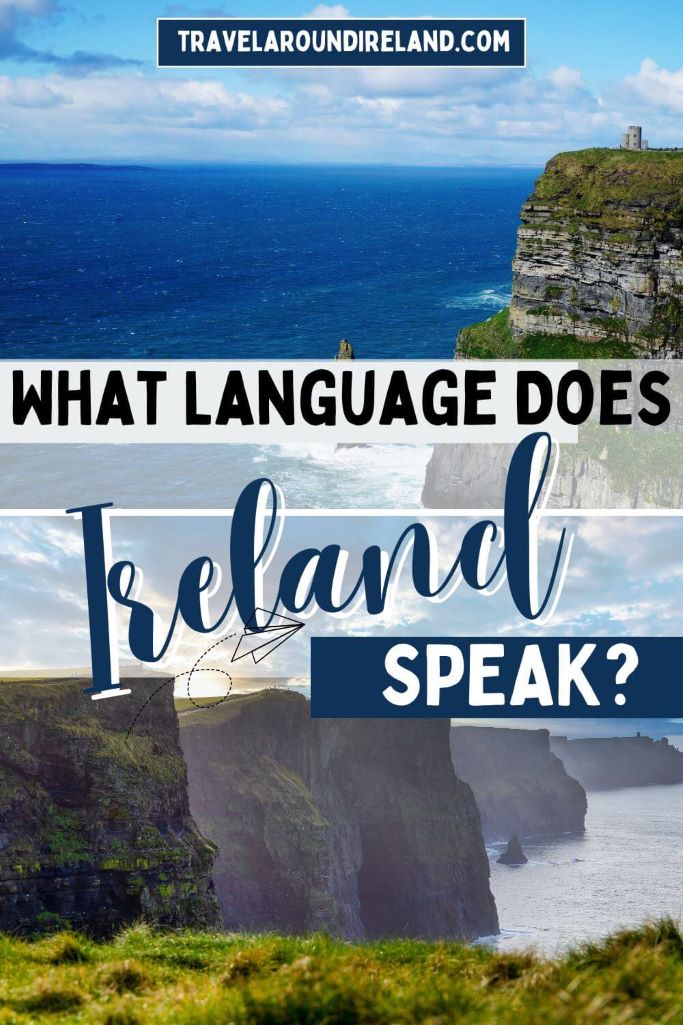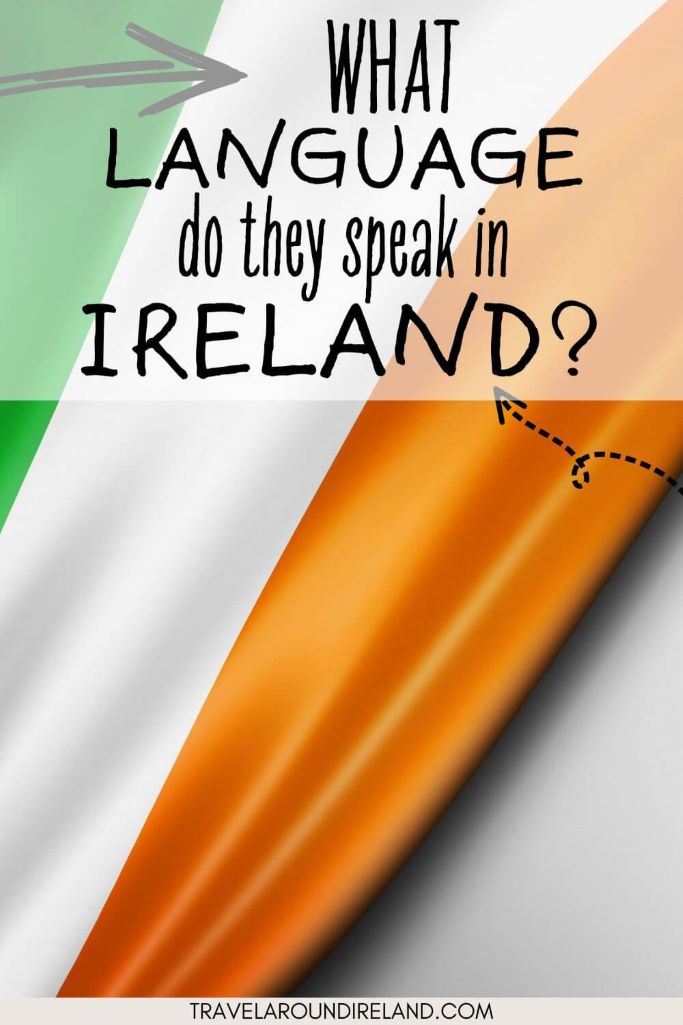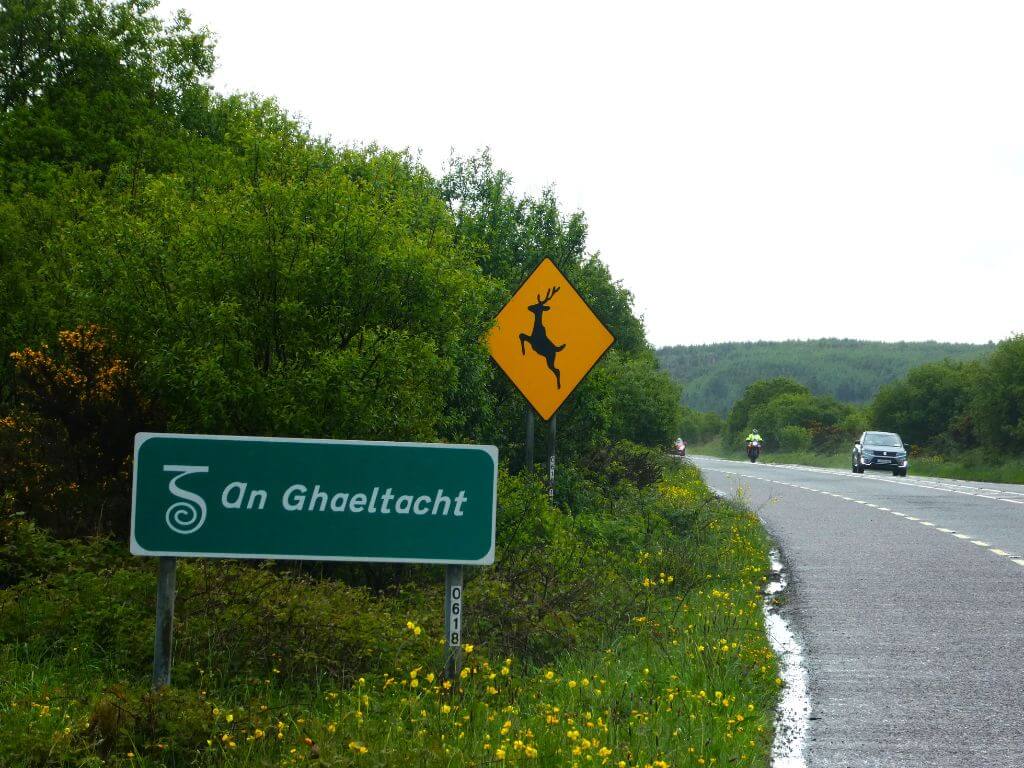Ireland boasts a rich linguistic heritage that reflects its complex history and cultural identity. The official languages of Ireland are Irish (Gaeilge) and English, with English being the predominant language spoken by the vast majority of the population.
Irish, also known as Irish Gaelic, is the native Celtic language of Ireland. It holds a special place in Irish culture and is taught in schools across the country. Despite its official status, only a small percentage of Irish people use it as their primary means of communication.
English became widespread in Ireland during centuries of British rule. Today, it serves as the main language for daily life, business, and government in both the Republic of Ireland and Northern Ireland. While the Irish accent and some unique vocabulary distinguish it from other English variants, it remains mutually intelligible with other forms of English spoken around the world.
Historical Context
Ireland’s linguistic landscape has been shaped by centuries of cultural interactions and historical events. The island’s language history reflects its complex past, with influences from various groups and civilisations.
Ancient Languages and Early Influences
The Gaels, an ancient Celtic people, brought their language to Ireland around 500 BCE. This tongue evolved into Primitive Irish, the earliest known form of the Gaelic language. Primitive Irish belonged to the Indo-European language family, specifically the Insular Celtic branch.
Ogham inscriptions, dating from the 4th to 6th centuries CE, provide the earliest written evidence of Irish (see an example in the pictures below). These carved symbols represent an alphabet used to write Old Irish, the ancestor of modern Irish Gaelic.
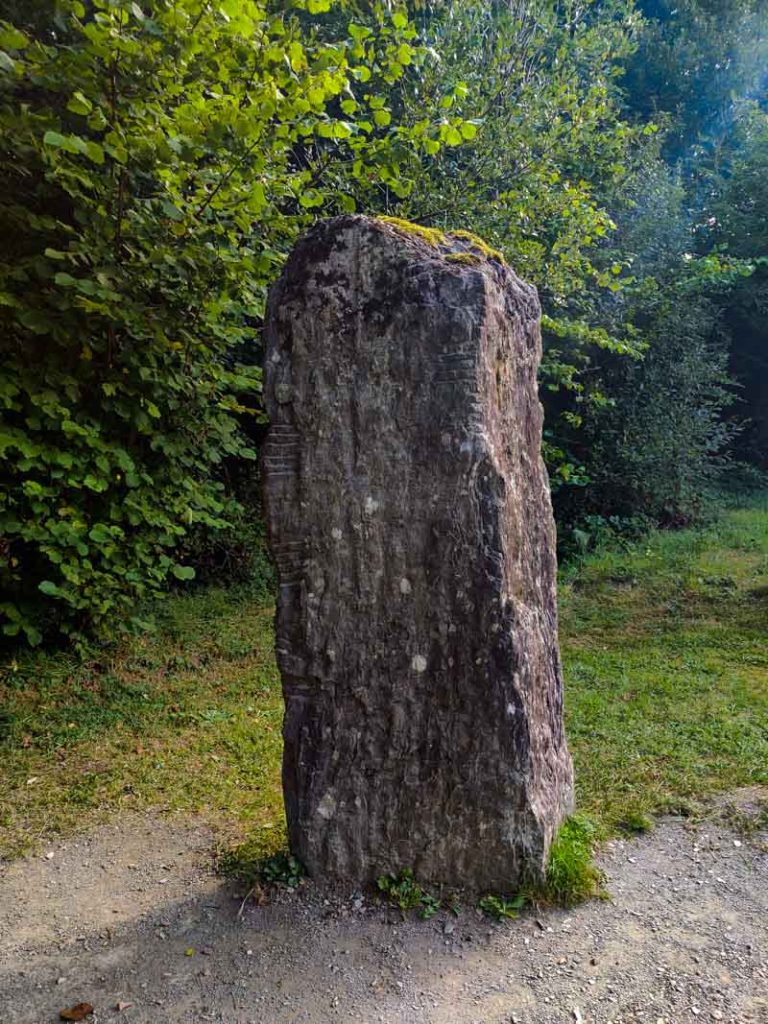
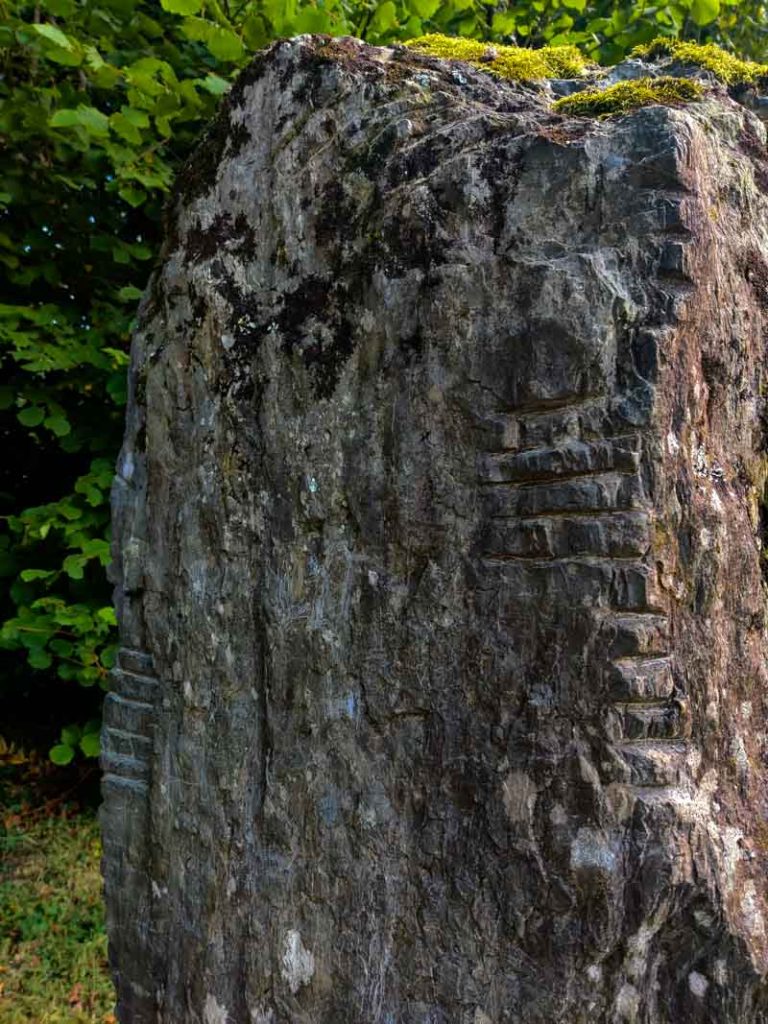
The development of Old Irish marked a significant linguistic shift. It emerged around the 6th century and flourished until the 10th century, laying the foundation for Middle Irish and later, Modern Irish.
British Colonisation and Its Impact on Language
The Anglo-Norman invasion of Ireland in the 12th century introduced new linguistic elements. Norman-French and Middle English began to influence the Irish language, particularly in urban areas and among the ruling classes.
As British control solidified, English became increasingly dominant. The Tudor conquest in the 16th century and subsequent plantations accelerated this trend.
English was enforced as the language of government, law, and commerce, with British rulers actively trying to stamp out Irish from being used in the 16th century (ref).
The Great Famine of the 1840s led to mass emigration and with it a sharp decline in Irish speakers. English became the primary language for most of the population, whilst Irish retreated to rural areas, particularly along the western seaboard.
Official Languages
Ireland has two official languages. These languages play distinct roles in Irish society and governance.
Irish (Gaeilge)
Irish, also known as Gaeilge (pronounced gwail-ga: Connacht dialect), is the national and first official language of Ireland.
The Official Languages Act 2003 solidified its status, mandating its use in government documents and official communications.
Irish is taught in schools across the country, though fluency levels vary widely.
Despite its official status, daily use of Irish is limited. The Gaeltacht regions, primarily along the western coast, are areas where Irish remains the primary spoken language. These communities play a crucial role in preserving and promoting the language.
The government actively supports Irish language initiatives through bodies like Foras na Gaeilge. These efforts aim to increase the language’s visibility and usage in everyday life.
English
English serves as the second official language of Ireland and is the most widely spoken language in the country. It is the primary language of business, education, and daily communication for the vast majority of Irish citizens.
The widespread use of English in Ireland traces back to centuries of British rule. Over time, it became deeply ingrained in Irish society, leading to its current dominant position.
While English is ubiquitous, it has developed unique characteristics in Ireland. Irish English, or Hiberno-English, incorporates elements of Irish grammar and vocabulary, creating a distinct dialect.
Examples of Irish-origin words in the English language
Here are some examples of English words of Irish origins.
- Galore – meaning a lot, from the words go leor meaning till plenty.
- Hooligan – meaning rowdy behaviour, coming from the Irish surname Houlihan.
- Slogan – meaning a word/phrase used by a specific group, from the word sluagh-ghairm meaning a battle cry used by Gaelic clans.
- Whiskey – from uisce beatha meaning water of life.
Irish Language Today
The Irish language maintains a presence in modern Ireland through dedicated regions, educational initiatives, and government support. Its usage and status have evolved in recent years.
Usage and Prominence
Irish, or Gaeilge, is spoken daily by a small percentage of Ireland’s population. The 2022 census revealed that over 1.8 million people in Ireland claimed to be able to speak Irish, with about 70,000 using it daily outside the education system (ref).
Gaeltacht regions, primarily located in counties Galway, Donegal, Kerry, and Mayo, are areas where Irish is the predominant language of the community.
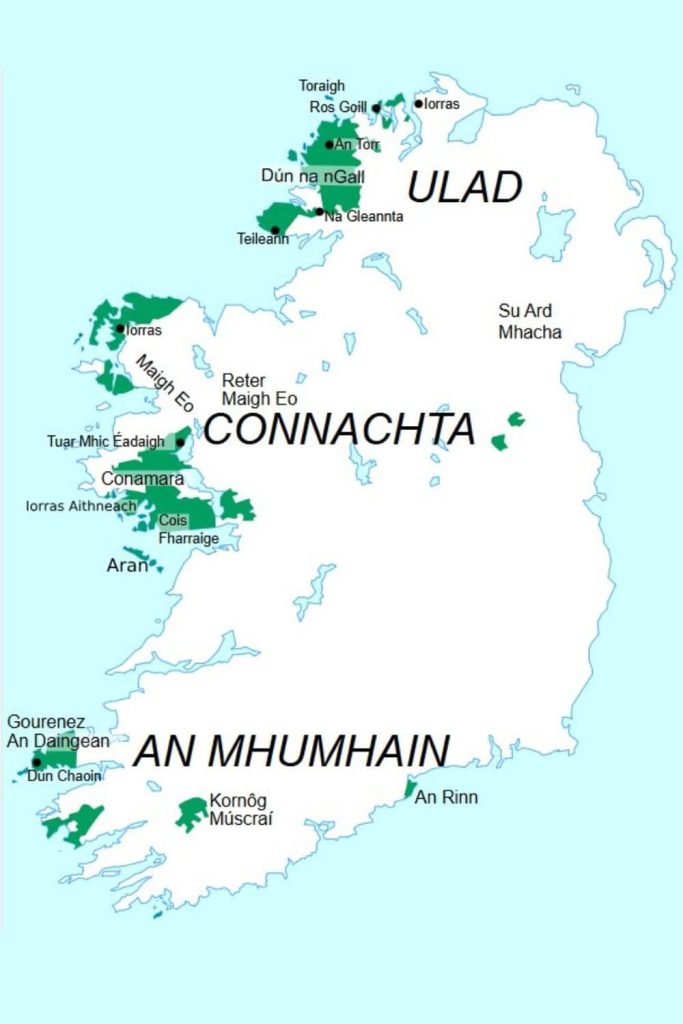
These Gaeltacht areas play a crucial role in preserving the language. However, the number of daily speakers in these regions has declined. The Central Statistics Office reports that only 66% of Gaeltacht residents speak Irish regularly.
Education and Government Policies
The Irish government has implemented various measures to promote the language.
Irish is a compulsory subject in primary and secondary schools. Some schools, known as Gaelscoileanna, use Irish as the medium of instruction for all subjects.
The 20-Year Strategy for the Irish Language 2010-2030 aims to increase the number of daily speakers to 250,000. Foras na Gaeilge, the cross-border body responsible for promoting Irish, supports language initiatives throughout the island.
Recent policies include the Official Languages Act, which requires public bodies to provide services in Irish.
English in Ireland
English is the dominant language in Ireland, widely spoken throughout the country. It coexists with Irish, the official national language, creating a unique linguistic landscape.
Prevalence and Influence
English is the primary language of daily communication in Ireland, used by the vast majority of the population.
It is the main language of government, business, education, and media. The Irish Times, Irish Examiner, and other major newspapers publish in English, reaching a broad readership.
Hiberno-English, a distinct variety of English spoken in Ireland, incorporates elements of Irish Gaelic. This dialect features unique vocabulary, grammatical structures, and pronunciation patterns that set it apart from other forms of English.
Whilst English dominates, Irish-language media outlets exist. TG4, a television channel, and RTÉ Raidió na Gaeltachta, a radio station, broadcast primarily in Irish. Many Irish sports such as hurling and Gaelic football commentary is done in Irish on TG4.
Publications like Seachtain and Comhar cater to Irish speakers, maintaining the language’s presence in print media.
English’s widespread use facilitates international communication and economic opportunities, whilst efforts to preserve Irish continue alongside it.
Irish Language Specifics
Irish is a Celtic language with distinct features and regional variations. It has a rich history and unique linguistic characteristics that set it apart from English.
Differences from English
Irish, also known as Erse, has a different grammatical structure compared to English.
It uses verb-subject-object word order, unlike English’s subject-verb-object pattern. Descriptive words come after the word they are describing, which can be confusing.
Irish employs initial mutations, where the first letter of a word changes based on its grammatical context.
The language also has no words for ‘yes’ or ‘no’. Instead, it repeats the verb in positive or negative form. Irish uses a single word, ‘tá’, for both ‘is’ and ‘are’.
Its phonology includes sounds not found in English, such as the slender ‘r’ and broad ‘l’.
Irish spelling can appear complex to English speakers, with combinations like ‘bh’ and ‘mh’ representing specific sounds. One example is the girl’s name Siobhan, pronounced Shiv-awn, where the ‘bh’ acts as a ‘v’.
The language also features lenition and eclipsis, processes that alter word beginnings in certain grammatical situations.
In simple terms, Irish is not an easy language to learn and often the phonetic way of learning English cannot be applied when learning Irish for the reasons explained above.
Dialects
Irish has three main dialects: Munster, Connacht, and Ulster. Each has distinct pronunciation, vocabulary, and grammatical features.
Munster Irish, spoken in the south, is known for its strong accent and unique vocabulary. It often stresses the second syllable of words.
Connacht Irish, found in the west, is considered the most central dialect. It forms the basis for the ‘Official Standard’ used in education and media. The dialect I learned in school was Connacht, even though my school was in Dublin in the province of Leinster.
Ulster Irish, spoken in the north, shares some features with Scottish Gaelic due to historical connections. It retains sounds lost in other dialects and has some unique grammatical forms.
These dialects reflect the rich linguistic diversity within the Irish language, showcasing regional variations in pronunciation, vocabulary, and even some grammatical structures.
If you would like to understand more about the different dialects, I recommend the below video on YouTube.
To hear the different dialects, you can use the Irish language website Teanglann to hear the three dialects in action. Here is an example of how hello in Irish is said in the three dialects.
Cultural Significance
Language plays a crucial role in shaping Irish identity and cultural heritage. It serves as a cornerstone of the nation’s artistic expression and historical legacy.
Role in Irish Identity
The Irish language holds immense significance in defining Irish identity. It forms an integral part of the country’s cultural fabric, reflecting centuries of history and tradition.
The Gaelic Revival movement of the late 19th and early 20th centuries sparked renewed interest in the language, promoting its use in literature and everyday life.
Irish has influenced countless works of literature, poetry, and music. Writers such as W.B. Yeats and Seamus Heaney incorporated Irish words and themes into their works, celebrating the language’s rich literary heritage.
Traditional Irish music often features lyrics in Irish, preserving ancient stories and cultural traditions.
The language also plays a role in Ireland’s education system. The majority of schools offer Irish language classes, fostering an appreciation for linguistic heritage among younger generations.
Road signs and official documents in Ireland are bilingual, featuring both English and Irish text.
Learning Irish
Learning Irish offers a gateway to Ireland’s rich cultural heritage and linguistic traditions. The language, also known as Gaelic or Irish Gaelic, has experienced a resurgence in recent years, especially with Americans who have discovered Irish heritage in their family.
Resources and Opportunities
Universities across Ireland play a crucial role in promoting Irish language education. Many institutions offer degree programmes in Irish Studies, providing comprehensive courses in language, literature, and culture. Trinity College Dublin and University College Dublin are renowned for their Irish language departments.
Online resources have made learning Irish more accessible than ever. Duolingo, a popular language-learning app, introduced an Irish course in 2014, attracting millions of learners worldwide.
The Irish government’s website, Teanglann.ie, serves as a valuable resource, offering an extensive Irish-English dictionary and pronunciation guides, with the three dialects shown.
Language immersion programmes in Gaeltacht regions, where Irish is the primary spoken language, provide intensive learning experiences. These programmes cater to learners of all levels, from beginners to advanced speakers.
I remember friends of mine in school ‘going away to the Gaeltacht’ during summer holidays to brush up on their Irish. They would spend a week or two in a Gaeltacht area where only Irish was spoken. I never went.
Benefits
Learning Irish fosters a deeper connection to Ireland’s cultural identity. It allows individuals to engage with traditional Irish literature, music, and folklore in their original forms, enhancing appreciation for the country’s artistic heritage.
For researchers and academics, knowledge of Irish opens doors to primary sources and historical documents written in the language. This skill is particularly valuable in fields such as archaeology, history, and Celtic studies.
Bilingualism, including proficiency in Irish, has been linked to cognitive benefits. Studies suggest that speaking multiple languages can improve memory, and problem-solving skills, and even delay the onset of dementia in later life.
In the job market, Irish language skills can be an asset. Positions in education, media, and government often require or prefer candidates with Irish language abilities, creating unique career opportunities for proficient speakers.
Comparison with Other Gaelic Languages
Irish Gaelic shares roots with other Gaelic languages but has distinct features. Its closest relative is Scottish Gaelic, with similarities in vocabulary and grammar.
Differences and Similarities with Scottish Gaelic
Irish and Scottish Gaelic have much in common, stemming from their shared Goidelic origins. Both languages use similar grammatical structures and share many cognates.
For example, the word for ‘welcome’ is ‘Failte’ in Irish and also ‘Failte’ in Scottish Gaelic. The word for good in Irish is ‘maith’ while it is ‘math’ in Scottish Gaelic.
However, there are notable differences. Pronunciation varies significantly, with Irish having a softer sound compared to Scottish Gaelic’s harsher tones. Spelling conventions also differ, with Irish using more accents.
Vocabulary divergences exist too. The Irish word for ‘woman’ is ‘bean’, while in Scottish Gaelic it’s ‘boireannach’. Some words have shifted meanings over time, creating potential confusion for learners.
Both languages contrast sharply with Manx Gaelic, which has its own unique features. Manx uses different orthography and has been influenced more heavily by English.
Minority Languages
Ireland’s linguistic landscape extends beyond Irish and English, encompassing a diverse array of minority languages. These languages reflect mostly modern immigration patterns, contributing to the country’s rich cultural tapestry.
Impact of Immigration on Linguistic Diversity
Immigration has significantly shaped Ireland’s linguistic diversity.
Polish, Lithuanian, and Romanian have become prominent minority languages due to increased migration from Eastern Europe. My brother-in-law is Romanian and we often compare Romanian words to Portuguese (which I am learning) as there are similarities due to the Latin side of both languages.
Chinese communities have brought Mandarin and Cantonese to Irish cities, particularly Dublin and Belfast, while Arabic speakers from North Africa and the Middle East have also established growing language communities.
The rise of multilingualism is evident in urban areas, where even Spanish, Portuguese, and Russian can be heard alongside traditional Irish languages. This linguistic mosaic has led to the emergence of translation services and multicultural events celebrating diversity.
Irish Sign Language (ISL) is recognised as an official language, serving the deaf community. Shelta, spoken by Irish Travellers, and remnants of Manx from the Isle of Man add to the linguistic heritage.
Ulster Scots, promoted by the Ulster Scots Agency, maintains a presence in Northern Ireland. Welsh influences are minimal but historically noteworthy.
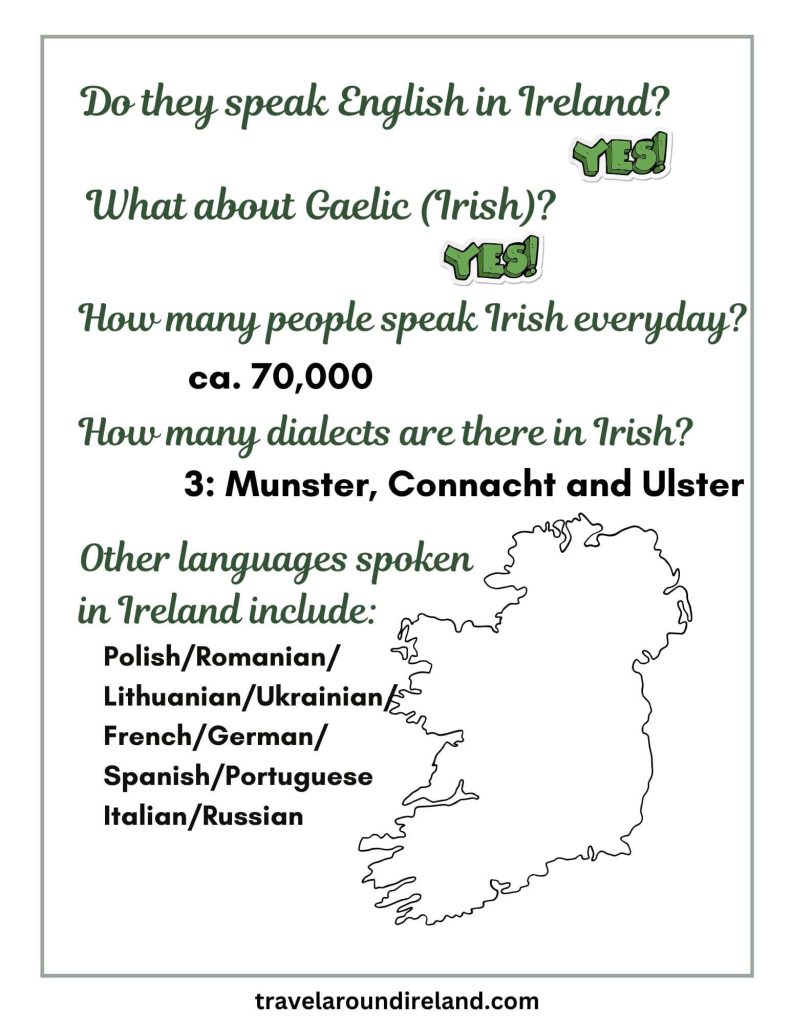
Conclusion
Ireland’s linguistic landscape reflects its rich cultural history and modern diversity. The languages spoken across the island encompass both ancient traditions and contemporary influences.
English serves as the primary language for most Irish people today. However, the Irish language remains an important part of the country’s heritage. Efforts to preserve and promote Irish continue through education and government initiatives.
While visitors to Ireland do not need to learn Irish or worry about communicating with the locals, learning a few Irish phrases can enhance one’s appreciation of the culture. And they should be aware that road signs will be bilingual.
Have you learned some Irish words and phrases? If not, click to find my guide to some basic Irish words and phrases and if you want to learn more, sign up for my fortnightly Ireland Insider newsletter where every two weeks you’ll learn a new Irish word or phrase!
You might also enjoy reading:
